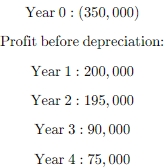- 20 Marks
BMF – Nov 2020 – L1 – SB – Q6 – Basics of Business Finance and Financial Markets
Explanation of loan covenants, reasons and benefits for share repurchase, and features of a finance lease arrangement.
Question
(a) For many loan agreements, the borrower is required to provide undertakings or guarantees of some kind.
Distinguish between covenants and guarantees. (5 Marks)
(b) State THREE reasons why a company will repurchase its shares and THREE benefits that will accrue to the company for doing so. (6 Marks)
(c) Companies can acquire assets with finance lease instead of buying assets with equity or debt capital.
State SIX main features of a finance lease arrangement. (9 Marks)
(Total 20 Marks)
Find Related Questions by Tags, levels, etc.
- Tags: Corporate finance, Finance lease, Guarantees, Loan Covenants, Share repurchase
- Level: Level 1
- Topic: Basics of Business Finance and Financial Markets
- Series: NOV 2020
Report an error

